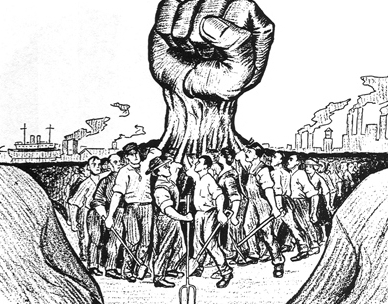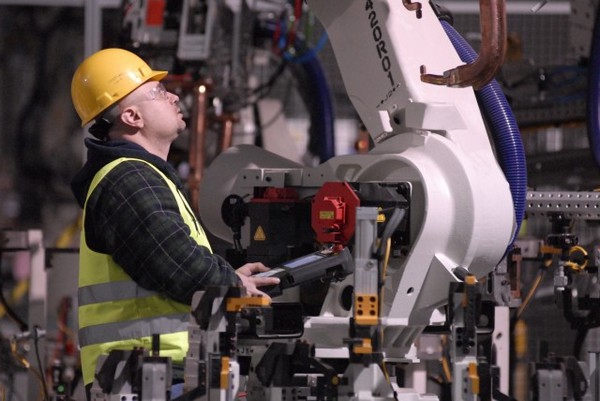Self-protection by an employee of labor rights involves the refusal to perform his duties. The purpose of this event is to restore the infringed interests of employees. Next, we consider methods of self-defense of the labor rights of workers. 
Characteristic
Self-protection by workers of labor rights as an institution of labor law is characterized by specific features. First of all, it is a non-jurisdictional method. In other words, employees do not involve authorized state bodies or officials to defend their interests. Self-protection by employees of labor rights is mainly a response to the unlawful behavior of the employer. It can, in turn, manifest itself in the form of actions or inaction.
The latter, for example, include the failure to provide the proper conditions for production activity. Actions can be manifested in the form of a transfer of an employee to another position without his consent. Self-protection by an employee of labor rights implies his initiative. Employee behavior is against the will of the employer. In other words, a conflict situation arises, which probably has not yet become a labor dispute (if the employee has not applied to the appropriate authority). It should be noted that an employee can use several methods to restore his interests. So, self-protection by employees of labor rights can be combined with going to court or to an authorized Inspectorate.
Legal aspect
The concept of self-defense is not clearly defined in labor law. The first attempts to indicate the ability of employees to defend their interests without contacting the authorized bodies were made in 1995. On July 18, the Fundamentals of Labor Protection were adopted. Part 5 contained a provision that in case of refusal of an employee to perform his duties in case of a threat to his health, life, increased workload, not provided for in the contract, for him there would be no unreasonable consequences. 
Current legislature
The Federal Law No. 181 of July 17, 1999 contains a clearer formulation: the employee has the right to refuse to perform professional activities if there is a danger to his health and life, as well as due to violations of labor protection requirements. The implementation of this opportunity is absolutely rightly connected with the illegal behavior of the employer.
Self-protection by employees of labor rights acts as a response that prevents the negative consequences that may occur in case of abuses by the enterprise management. The admissibility of using this feature in cases provided for by law is defined in Article 8 of the aforementioned Federal Law. The introduction of this relatively new element in the legislation should be considered in the general vein of democratization of production relations, equalization of interests of both parties, and providing the employee with wider opportunities for interaction with management.
Self-protection by employees of labor rights (briefly)
It should be said that the legislation does not establish general standards for the implementation of this opportunity. Nevertheless, applying the general theoretical concepts of self-defense, it is quite possible to determine that this measure in the sphere of production relations is allowed and applied if there are illegal actions aimed at the freedoms and interests of the collective and the need to suppress them.Gross violations that serve as the basis for the implementation of this opportunity are established by law.
Self-protection by employees of labor rights is free. Neither the head of the enterprise, nor its representatives can create obstacles for employees to realize this opportunity. Forcing an employee to perform contrary to his will of certain duties, the use of threats and psychological pressure. It is forbidden to attract to disciplinary liability workers exercising their right to self-defense. Harassment of employees for their use of the possibilities permitted by law is not allowed. The actions of persons who represent the interests of the employer may be appealed to the Inspectorate or in court.
Self-protection by workers of labor rights: forms of self-defense
This measure may be expressed in the employee's refusal to perform professional duties, if they are not provided for in the contract. He may also shy away from activities that appear as potential threats to his health and life. An exception is only those cases that are defined in the Federal Law. During the period of using this opportunity and, accordingly, non-fulfillment by an employee of certain duties, he retains all his rights established in the Labor Code and other federal laws.
The sphere of regulation of industrial relations has its own specifics. It has significant differences from civil law, allowing any measures to curb it that are relevant to the content and nature of the crime. Given the unequal position of participants in industrial relations, the legislator establishes only one form in which self-protection by employees of labor rights can be embodied - refusal to continue activities. 
Important point
The use of self-protection by employees of labor rights has its limitations. The law establishes a list of activities whose termination is not allowed. In particular, this may be related to ensuring the safety of society and the state. The application of the form of self-protection established by law to employees of labor rights cannot be considered as a dispute. However, employees along with the realization of this opportunity may apply to the competent authority.
Duration of termination
Self-protection by employees of labor rights has no time frame. It can continue until the interests of the team are taken into account and violations are eliminated. So, for example, immediately after issuing the earned money, issuing an order to transfer to a previous position, and so on, the employee must continue his activities.
Unlike a strike
Self-defense in the framework of labor relations is aimed at upholding individual interests: the right to receive a salary on time and in full, to hold a position and perform functions in accordance with the contract and your skills, protect health and life in the course of production activities, and so on. The strike is aimed at upholding collective interest. It is also expressed in a partial or complete refusal to continue production activities, but by the whole team.
The realization of the right to self-defense is carried out by the workers themselves. regardless of the rest of their colleagues. As for the strike, the decision to hold it is taken only collectively at a meeting of employees. Together with the use of self-defense, the employee is entitled to apply to the individual labor dispute resolution bodies or to the Inspectorate. The strike takes place in the process of resolving a collective dispute. In this case, it is impossible to go to court and demand supervision of the legality of the tenant’s actions. In a strike, conciliation procedures must be applied. 
Effects
Continuing to compare the self-defense of workers and the strike, it should be noted that the application of these measures provokes different results. So, in case of individual refusal to continue production activities, the employee again starts it only after elimination of violations. In other words, the result is the restoration of his interests. The duration of the strike depends on the effectiveness of the conciliation proceedings. It can be completed after the conclusion of an agreement defining the new rights of employees, partial or full compliance with requirements. A strike may also end by decision of the elected body that leads it without reaching an agreement.
findings
Based on the foregoing, the following can be determined:
- The right to strike is guaranteed by Russian law only to resolve collective labor disputes. This provision is fully consistent with international principles.
- In case of non-payment (delay) of salary, an individual dispute or their combination arises.
- Suspension (termination) of work due to non-payment of earned funds to employees cannot be recognized as a strike.

Grounds
The Labor Code defines three cases in which the right to self-defense can be used. They are installed in Art. 142 and 379. These include:
- The assignment of work that is not provided for in the employment contract (contract).
- The presence of a threat to life, health.
- Delayed pay for more than 15 days.
This list is not considered exhaustive in the legislation and remains open.
Payment during suspension
It is determined depending on the reason for which self-protection by employees of labor rights was applied. The Labor Code of the Russian Federation, for cases of violations of requirements for the protection of production activities, establishes payment for downtime through no fault of the employee. It is likely that it is more expedient to compensate for the suspension of professional duties as simple due to the fault of the employer. This rule is set in Art. 157, Part 1. It indicates that the employer has not fulfilled the duties that are assigned to him by law.
However, when transferring an employee to another type of activity, this approach cannot be applied. In this case, he actually had no opportunity to carry out activities. In accordance with the prevailing practice of resolving conflict situations in the production sector, a work permit in such situations is paid as forced absenteeism. This provision is contained in Articles 394 and 72 of the Code. Upon suspension of activity due to delayed payment, the employee does not have any guarantees for compensation. This circumstance significantly reduces the importance of applying self-defense of one's labor rights in this case. 
The need for presence at the enterprise
The legislation does not provide any requirements and rules in this regard. Only article 142 of the Code is an exception. In this regard, the issue of the need for the presence of an employee at the workplace should be solved using the rules of the company or by agreement between the worker and the employer.
Finally
As can be seen from the above, today the right to self-defense does not have clear, defined boundaries. The provisions on compensation for downtime due to the application of these measures are not clearly defined. This is probably due to the insufficiently extensive practice of resolving these conflicts. Moreover, far from in all cases, hired employees manage to achieve restoration of their interests and elimination of violations. The realization of the possibility of self-defense of labor rights in practice should be fixed by the establishment of a certain procedure.On the one hand, it should ensure the maximum effectiveness of this method, and on the other, guarantee the proportionality of the response to committed violations of the law, as well as respect for the interests of other persons.
